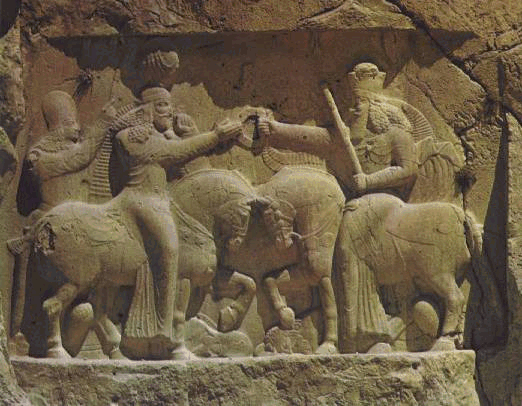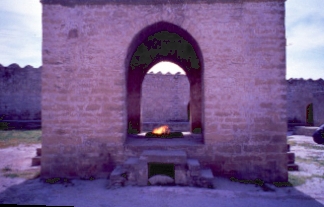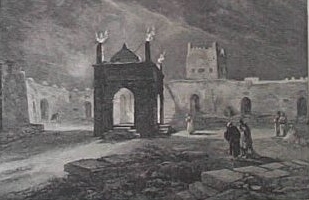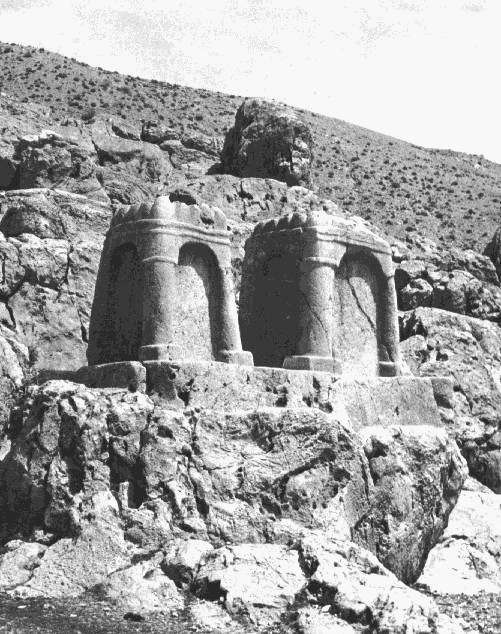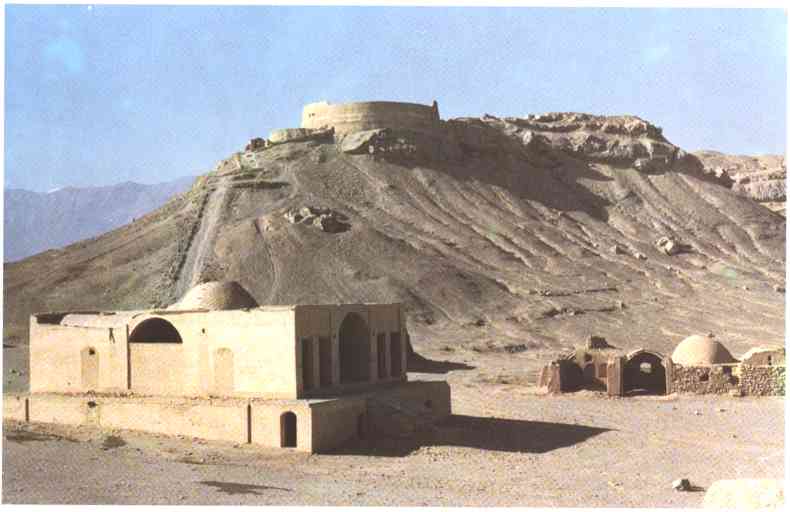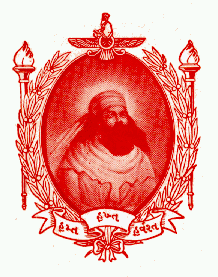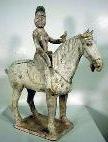
- LOTE13 Home
- Getting Started
- Rules Addenda
- Campaign Maps
- The Newsfax
- Starting Positions
- Files to Download
- A Bibliography
- Get the LOTE Rulebook
- Main LOTE Page

A Twilight of Empires
Lords of the Earth, Campaign 13

Orthodox Zoroastrians
Recent estimates place the date of the prophet Zoroaster as far back as the 12th century BCE. His surviving writings, the gathas, and later works such as the yashts and others, are the sacred works of the faith. A summary of the faith - a Golden Rule, if you will - is often given as
Good thoughts, good words, and good deeds.
Later writing circumscribed the theology into tighter and tighter circles, which lead to less tolerance for other faiths within the Persian Empire. Missionary work in the East was undertaken at times, and the Mithraic cults of the Roman West derived from folk Zoroastrian practice.
Fire temples formed an important part of ritual life, fire symbolizing the purifying power of Ahura Mazda over the desecrating influence of Ahriman and his agents. As ritual purity was important, the dead were placed in towers of silence, lest their decay polluted the earth or fire. Saying that Zoroastrians worship fire is akin to claiming Christians are cannibals - it rather misses the point, to say the least.
Cosmologically, Ahura Mazda created the universe to bind the evil Ahriman in a struggle. Humans were an important part of this effort, with victory guaranteed. It is commonly believed that Judeo-Christian concepts of heaven and hell borrowed heavily from Zoroastrian theology.
In Sasanian Persia, the Zoroastrian priesthood held a position analogous to that of the Roman Church in medieval Europe. They supplied scribes and teachers locally and at court, and were very active politically.
For more information see (also Ohrmazd, Avesta, Zardushti, Iran, Sassanid, Sasanian, Kartir):
